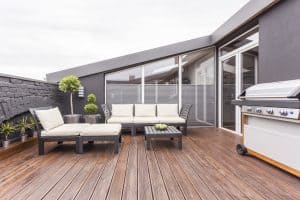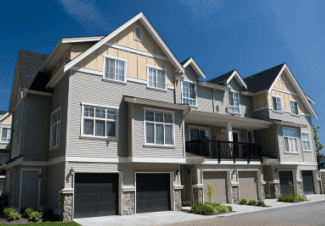The New Age of Amenities

But living through a pandemic has given everyone a different perspective on amenities. It’s been interesting to see that the things we took for granted, like natural light and outdoor space, have become—and will continue to be—the most important amenities of all.
While many developments made connecting people and nature within built environments and communities a hallmark in recent years, what’s new in 2021 is a heightened demand for direct access to sunlight and fresh air that blends the outdoors and indoors in refreshing ways.
Going forward, we believe design will flow from a need to create environments where renters find inspiration in their natural surroundings while also benefiting from the tangible health benefits that natural light and outdoor space offer.
Here are three design trends taking shape that reflect this new approach to amenities:
PRIVATE OUTDOOR SPACES
According to a CBRE 2021 U.S. Real Estate Market Outlook Multifamily report, many renters desire greater access to outdoor options as an outlet for long hours in apartments, given both the remote work and e-learning trends in place since the pandemic.
Given the increasing importance among renters for access to fresh air, we’re seeing developers and operators take a hard look at planned common outdoor spaces and courtyards to make sure they can serve multiple functions—from a place for people to soak in sunshine, connect with friends and exercise, to an entertainment venue for family and friends, and even a work from home spot. Satisfying these demands requires adequate shade protection, outlets and accessibility.
As residents continue to look for ways to incorporate outdoor time, private terraces and balconies are becoming even more of a priority—from how they look to their functionality. Is there sufficient seating space? Should there be overhead coverage? Is the Wi-Fi solid? Such livable private outdoor spaces create a more immediate way to be outside.
Building more private spaces into the design of common spaces could also meet this demand. Offering a private poolside cabana or a firepit with intimate seating on a common terrace accomplishes this nicely. To add a layer of exclusivity, these spaces can also be reservable for residents seeking a way to be part of a community while enjoying time to themselves. This fulfills the renewed demand for exclusive spaces where residents can feel like part of a community—yet at the same time have private areas.
GOING GREEN
Leveraging green sustainable building practices in multifamily developments means moving toward a more carbon-neutral footprint by filtering out pollutants and carbon dioxide so residents—and the surrounding communities—can breathe cleaner air.
An Australian university in 2019 surveyed nearly 1,000 Americans and Australians to find 77 percent of individuals wanted to learn more about sustainable lifestyles. Nearly 90 percent of respondents said they wanted to make efforts to live an eco-friendly lifestyle, with 72 percent driven to leave a better planet for their children.
Adopting a greener lifestyle is resonating with renters today, and developers are responding by adding more landscaping to common areas and private terraces.
Even small changes can have a big impact. For example, some developers are making the switch to net-zero technology by installing electric grills for private terraces.
ACTIVATING YEAR-ROUND SPACES
As we have learned since the inception of the pandemic, residents place a high value on making amenity spaces accessible all year regardless of whether they’re in a warmer climate like Arizona or a four-season location like Chicago. While owners of existing buildings can likely find some easier adjustments to accomplish year-round outdoor living, such as retrofitting spaces by adding heat lamps, others may need to get more creative.
For new-construction projects, we are seeing flexible indoor-outdoor spaces designed to increase resident amenity participation as well as promote health and wellness. Ways this is being incorporated into a design include using retractable glass for a rooftop fitness studio so it can be opened or closed depending on the weather; installing exterior NanaWalls that fold to the side to create indoor/outdoor spaces; or creating a rooftop running track that follows the perimeter of a green roof featuring landscaping and trees to offer 360-degree views and shield joggers from inclement weather.
We’re also seeing more envelope pushing when it comes to conventional ideas of outdoor amenities. For example, a rooftop pool that residents can use all year is a fairly new concept in a climate like the Midwest, but one that we’re sure to see implemented soon.
Looking ahead, as multifamily developers, we’ll all no doubt take the lessons learned from a year of transformation to evolve the range of amenities to be healthier and greener than ever before.
Source: multihousingnews.com















 Accessibility
Accessibility